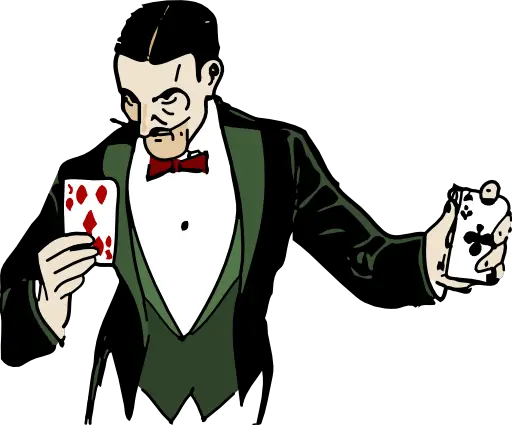Support our educational content for free when you purchase through links on our site. Learn more
What is a Tricky Question? 🤔 7 Mind-Bending Examples Inside!
Have you ever found yourself stumped by a question that seemed simple at first glance, only to realize it was a clever riddle designed to trip you up? Welcome to the fascinating world of tricky questions! These brain teasers are not just for trivia nights or game shows; they challenge our thinking, reveal our assumptions, and often lead to some delightful “aha!” moments. In this article, we’ll dive deep into what makes a question tricky, explore various types, and even arm you with strategies to tackle them like a pro.
Did you know that the way we respond to tricky questions can reveal a lot about our cognitive biases? 🤯 Understanding this can not only enhance your problem-solving skills but also make you the life of the party with your newfound ability to stump friends and family! So, are you ready to unravel the mysteries of tricky questions? Let’s get started!
Key Takeaways
- Tricky questions are designed to mislead or confuse while challenging our critical thinking skills.
- They come in various forms, including riddles, philosophical quandaries, and playful trick questions.
- Understanding the psychology behind tricky questions can help improve your problem-solving abilities.
- Practice makes perfect! The more you engage with tricky questions, the better you’ll become at recognizing patterns and strategies.
- Craft your own tricky questions to entertain and challenge others!
If you’re interested in enhancing your cognitive skills, consider checking out books on critical thinking and problem-solving:
- 👉 Shop Books on Critical Thinking:
Dive into the world of tricky questions and sharpen your mind today! 🧠✨
Table of Contents
- Quick Tips and Facts
- What Exactly is a Tricky Question?
- The Psychology Behind Tricky Questions
- Types of Tricky Questions You’ll Encounter
- How to Tackle Tricky Questions Like a Pro
- Real-Life Examples of Tricky Questions
- The Importance of Tricky Questions in Learning
- Tips for Crafting Your Own Tricky Questions
- Common Mistakes When Answering Tricky Questions
- Conclusion
- Recommended Links
- FAQ
- Reference Links
Feel free to dive into each section as we unravel the fascinating world of tricky questions! 🧠✨
Quick Tips and Facts
- Tricky questions thrive on wordplay, assumptions, and misdirection. 🤔 They’re designed to make you think twice, and then maybe even question everything you thought you knew! 🤯
- Don’t rush to answer! 🐢💨 The most obvious answer is often a trap. Savour the challenge, take a breath, and analyze the question from different angles.
- Tricky questions aren’t just about finding the “right” answer. Sometimes, the journey of exploring different possibilities is more important than the destination. The goal is to stretch your mind and expand your thinking. 🤸♀️🧠
- Don’t be afraid to ask for clarification. Sometimes, a simple rephrasing can reveal the trickery afoot. 🕵️♀️
- Embrace the fun! 😄 Tricky questions are a playful way to challenge your intellect and engage in some mental gymnastics.
What Exactly is a Tricky Question?
Ah, the elusive tricky question! It’s a question designed to deceive or mislead, often appearing deceptively simple but harboring a hidden twist. Think of it as a mental puzzle wrapped in a riddle, sprinkled with a dash of “gotcha!” 😈
Read more about mind-trick questions here!
The Art of Deception
Tricky questions are masters of disguise. They can take many forms, from seemingly straightforward queries to elaborate scenarios that leave you scratching your head. The common thread? They all aim to catch you off guard and test your critical thinking skills.
Why Do We Even Ask Them?
But why do we subject ourselves to these mental mazes? Well, tricky questions serve several purposes:
- To entertain and amuse: Let’s be honest, there’s a certain satisfaction in cracking a tough question. It’s like solving a mini-mystery! 🕵️♀️
- To challenge our assumptions: Tricky questions force us to question our preconceived notions and think outside the box. They remind us that things aren’t always as they seem.
- To improve our critical thinking skills: By analyzing the nuances of language and logic, we sharpen our ability to reason and problem-solve.
- To spark conversation and debate: Tricky questions can be great conversation starters, leading to lively discussions and different perspectives.
The Psychology Behind Tricky Questions
Why do tricky questions, well, trick us? It all boils down to how our brains process information. 🧠
The Power of Assumptions
Our brains are wired to make assumptions. It’s a survival mechanism that helps us navigate the world quickly. But when it comes to tricky questions, our assumptions can be our downfall. We tend to jump to conclusions based on familiar patterns, overlooking the subtle cues that signal a trick.
Cognitive Biases at Play
Tricky questions often exploit our cognitive biases, those mental shortcuts our brains take to simplify decision-making. For example, the “framing effect” shows that we’re more likely to choose an option if it’s presented in a positive light, even if it’s logically the same as a negatively framed option.
The Element of Surprise
Tricky questions catch us off guard, disrupting our normal thought processes. This element of surprise makes us more susceptible to errors in judgment. We’re less likely to think critically when we’re caught off balance.
Types of Tricky Questions You’ll Encounter
Prepare to be puzzled! Tricky questions come in a variety of flavors, each with its own unique way of messing with your mind. 😈 Here are a few common types:
1. Riddles and Brain Teasers
These are classic tricky questions that rely on wordplay, metaphors, and lateral thinking. They often involve finding an unexpected solution or interpreting the question in a non-literal way.
Example: What has an eye but cannot see?
Answer: A needle
2. Philosophical Quandaries
These questions delve into deep, existential topics, often with no right or wrong answer. They’re designed to make you ponder life’s big questions and challenge your perspectives.
Example: If a tree falls in the forest and no one is around to hear it, does it make a sound?
3. Logical Puzzles
These questions test your deductive reasoning and analytical skills. They often present a set of clues and challenge you to draw logical conclusions.
Example: You have two ropes, each of which takes one hour to burn completely. How can you measure 45 minutes using only the ropes and a lighter?
4. Hypothetical Scenarios
These questions present imaginary situations that require you to think creatively and consider different possibilities. They often test your problem-solving skills and ability to think on your feet.
Example: You’re trapped in a room with a lion. You have a gun with only one bullet. Can you escape?
5. Playful Trick Questions
These questions are designed for lighthearted fun and often rely on word tricks or silly scenarios. They’re a great way to break the ice or add some humor to a conversation.
Example: What has four wheels and flies?
Answer: A garbage truck
How to Tackle Tricky Questions Like a Pro
Ready to outsmart those tricky questions? Here are some strategies to up your game:
- Read Carefully: Pay close attention to every word, especially qualifiers like “always,” “never,” “only,” and “some.” These little words can drastically change the meaning of a question.
- Question Your Assumptions: Don’t take anything for granted. Challenge your initial interpretations and consider alternative perspectives.
- Look for Hidden Meanings: Tricky questions often use metaphors, analogies, or wordplay. Try to decipher the underlying message beyond the literal words.
- Break It Down: If the question is complex, break it down into smaller parts. This can help you identify the trick and approach it strategically.
- Don’t Be Afraid to Ask for Clarification: If you’re unsure about what’s being asked, don’t hesitate to ask for clarification. Sometimes, a simple rephrase can reveal the trickery afoot.
- Think Out Loud: Verbalizing your thought process can help you spot flaws in your logic and explore different avenues.
- Practice Makes Perfect: The more tricky questions you encounter, the better you’ll become at recognizing the patterns and developing effective strategies.
Real-Life Examples of Tricky Questions
Tricky questions aren’t just confined to game shows and riddle books. They pop up in everyday life, from job interviews to casual conversations. Here are a few examples:
- Job Interviews: “Tell me about a time you failed.” This question aims to assess your self-awareness, resilience, and ability to learn from mistakes.
- Sales Pitches: “What’s the catch?” This question challenges the salesperson to address any hidden drawbacks or limitations of their product or service.
- Negotiations: “What’s your bottom line?” This question tries to pin you down on your lowest acceptable price or terms.
- Relationships: “Do I look fat in this?” Ah, the classic relationship minefield! This question isn’t really about fashion advice; it’s about seeking reassurance and validation.
The Importance of Tricky Questions in Learning
While they can be frustrating, tricky questions play a valuable role in the learning process:
- Deeper Understanding: They force us to engage with the material on a deeper level, moving beyond rote memorization to true comprehension.
- Critical Thinking: They challenge us to analyze information carefully, identify biases, and evaluate different perspectives.
- Problem-Solving Skills: They encourage us to think creatively, explore multiple solutions, and develop strategies for tackling complex challenges.
- Retention: The mental effort required to solve tricky questions strengthens our memory and improves our ability to recall information later on.
Tips for Crafting Your Own Tricky Questions
Want to stump your friends and family? Here are some tips for crafting your own mind-bending queries:
- Start with a Simple Premise: Begin with a seemingly straightforward question that’s easy to understand.
- Introduce a Twist: Add a word, phrase, or concept that creates ambiguity or misdirection.
- Use Wordplay: Play with double meanings, puns, or homophones to create confusion.
- Exploit Assumptions: Base your question on a common assumption that’s likely to be incorrect.
- Keep It Concise: Avoid convoluted wording or overly complex scenarios. The best tricky questions are often the simplest.
- Test It Out: Before unleashing your question on the world, try it out on a few unsuspecting victims to gauge its effectiveness.
Common Mistakes When Answering Tricky Questions
We’ve all fallen prey to the allure of the obvious answer. Here are some common pitfalls to avoid:
- Rushing to Answer: Take your time, breathe, and resist the urge to blurt out the first thing that comes to mind.
- Overlooking Key Details: Pay attention to every word, as even small details can drastically change the meaning of a question.
- Ignoring Context: Consider the source of the question and the situation in which it’s being asked. Context can provide valuable clues.
- Assuming There’s Only One Right Answer: Some tricky questions have multiple valid answers, while others are open to interpretation.
- Being Afraid to Ask for Help: There’s no shame in seeking clarification or asking for hints.
Conclusion
In the world of tricky questions, we’ve explored the art of deception, the psychology behind our responses, and the various types that keep our minds sharp and engaged. Tricky questions are not just playful puzzles; they serve as valuable tools for enhancing critical thinking, problem-solving skills, and even sparking meaningful conversations.
To wrap it up, here’s a quick summary of the positives and negatives of engaging with tricky questions:
Positives:
- Enhances Critical Thinking: They challenge our assumptions and force us to think outside the box.
- Improves Problem-Solving Skills: Tackling these questions helps develop creative solutions.
- Encourages Engagement: They can spark lively discussions and debates, making them great for social interactions.
Negatives:
- Can Be Frustrating: The deceptive nature can lead to confusion and frustration.
- May Cause Anxiety: Some individuals may feel pressured to answer quickly, leading to mistakes.
- Not Always Appropriate: In certain contexts, such as formal assessments, they may be seen as unfair.
In conclusion, we confidently recommend embracing tricky questions as a fun and educational way to sharpen your mind. Whether you’re using them in social settings, interviews, or just for personal growth, they’re a fantastic tool for expanding your cognitive abilities. So, the next time you encounter a tricky question, take a moment to savor the challenge! 🧠✨
Recommended Links
- 👉 Shop Books on Tricky Questions and Critical Thinking:
FAQ
What are some examples of tricky questions that can be used to test critical thinking skills?
Examples include:
- “If you could have dinner with any historical figure, who would it be and why?” This question assesses values and priorities.
- “How would you explain a complex concept to a five-year-old?” This tests your ability to simplify and communicate effectively.
How do mind-bending tricks and illusions work to manipulate our perception of reality?
Mind-bending tricks and illusions exploit our cognitive biases and the limitations of our sensory perception. By presenting information in unexpected ways, they can lead us to draw incorrect conclusions or overlook critical details. For example, magicians often use misdirection to divert our attention away from the method behind their tricks, making us believe in the impossible.
What are some common types of tricky questions that are used in interviews and assessments?
Common types include:
- Behavioral questions: “Tell me about a time when you faced a challenge.”
- Hypothetical scenarios: “What would you do if you were given a project with a tight deadline?”
- Philosophical questions: “What does success mean to you?”
Can tricky questions be used to improve problem-solving skills and cognitive ability?
Absolutely! Engaging with tricky questions encourages individuals to think critically, analyze information, and develop creative solutions. This practice can enhance cognitive flexibility and improve overall problem-solving skills.
How do magicians use tricky questions and misdirection to create illusions and tricks?
Magicians often employ tricky questions as part of their routines to mislead the audience. By framing questions in a way that leads to incorrect assumptions, they can create a sense of wonder and surprise when the trick is revealed. Misdirection is a key technique, where the magician directs the audience’s attention away from the method of the trick.
What is the difference between a tricky question and a brain teaser, and how are they used differently?
A tricky question is often designed to mislead or confuse, while a brain teaser typically presents a logical puzzle that requires careful thought to solve. Tricky questions may focus more on language and assumptions, whereas brain teasers often rely on mathematical or logical reasoning.
Are tricky questions and mind-bending tricks used in fields such as psychology and neuroscience to study human perception and cognition?
Yes! Researchers in psychology and neuroscience often use tricky questions and illusions to study how people perceive information, make decisions, and solve problems. These studies can reveal insights into cognitive biases, memory, and the underlying processes of human thought.
Reference Links
- Wikipedia on Trick Questions
- Target Jobs on Tricky Interview Questions
- X-Kalay – Tricky Question | Maruwa
- Mind Trick™ – Magic Psychology
- Mind Trick™ – Card Tricks
Feel free to explore these resources for deeper insights into the fascinating world of tricky questions and the psychology behind them!





